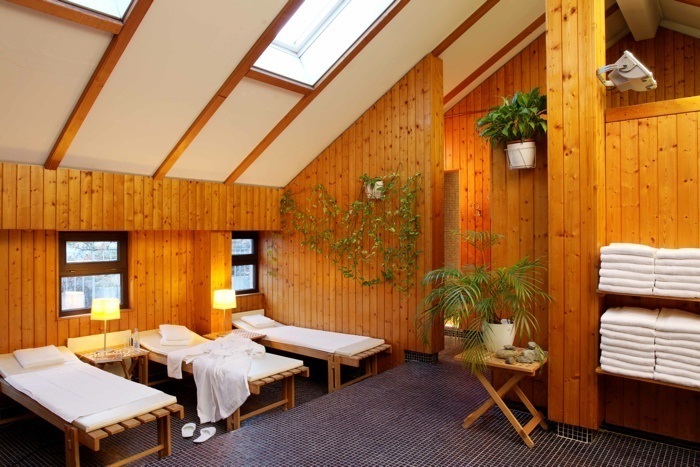Sauna
Proper saunas
It is preferable to have showered and dried yourself thoroughly before you head to the sauna. A dry skin surface ensures that you sweat faster. After all, a sauna is all about perspiring, which is a natural protective function for high temperatures - the purpose being to cool your body.

For us the most popular variety of sauna is the infusion sauna, where the infusion water is often enriched with essential oils and has a high humidity level. Many sauna facilities also offer a dry sauna, in which even higher heat can be endured without a water infusion. This is also known as a Sahara sauna. In our latitudes it is customary to go into a sauna without clothes. Placing a towel under your body to catch the perspiration is sufficient to maintain hygiene. On occasions in Finland people even do without a towel altogether. In contrast in the USA and in Asia no-one has a sauna treatment naked. Here the ‘textile’ sauna is the prevailing idea, mostly as an adjunct to swimming pools. A stay of 8 to 15 minutes in a sauna cabin is recommended. After this you should take the opportunity to get some fresh air - your lungs are particularly good at taking in oxygen after a sauna. Follow up with a cold shower. Jumping into a lake, a rubdown with ice or rolling in the snow is probably the crowning moment for every sauna fan. At the end of a sauna session you relax for around 15 minutes in a relaxation room and can then, if you want, go through the cycle for a second or third time. However, should you overdo it be prepared to feel very fatigued. Anyone who suffers from poor circulation should approach a sauna with care. Enjoyed in moderation however, a visit to a sauna is particularly beneficial for our well-being, particularly in the cold seasons of the year and is great for our health.
Artificial fever
To work up a sweat normally some physical activity is required. But not all sport keeps us healthy, yet a trip to the sauna really can work wonders. While sweating our body temperature rises to 39 degrees. An artificial fever, which we expose ourselves to, has the same function as a real fever - it destroys pathogens. A trip to the sauna also strengthens circulation and nourishes our skin. The heat dilates our blood vessels, which then narrow again with the cold bath which follows. This cooling has a relaxing effect on our muscles, lowers blood pressure, stimulates the metabolism, circulation and immune system and re-energises breathing. Last but not least, the activation of sweat glands during a sauna session and the storage of water in the skin prevents skin aging and can be re-invigorating and refreshing, particularly for very dry skin.
- Never go to the sauna when you are exhausted or straight after exhausting sport; this can cause circulatory problems.
- Always dry yourself well in the sauna, this helps you to sweat more.
- Avoid physical exertion in the heat. Even talking can be overexertion.
- Never go to the sauna during an acute viral infection.
- Only drink after a sauna session, otherwise the detoxifying effect will be nullified.
- Do not have a hot shower after a sauna, always a cold one. This helps with the cooling effect.
- Avoid unnecessary 'post-sweating', even if there are warm pools and 'post-sweating' areas. This can lead to an overload on your circulatory system and to infections.
- Cold foot baths after a sauna can cause vasospasms.
- Keep-fit exercises and swimming after a sauna session delays cool-down and can lead to infections.
